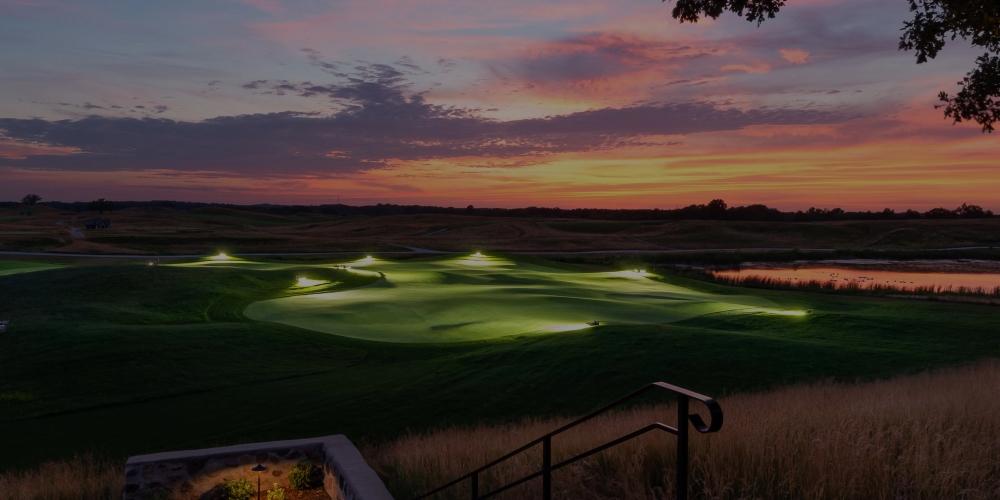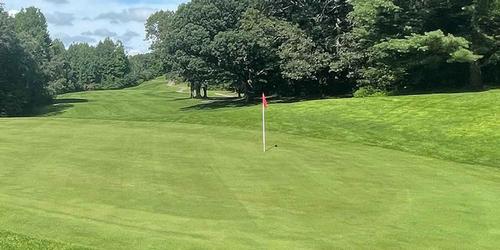
Golf Course Overview: Erin Hills Golf Course
Insights From An Insider With John Morrissett, Competitions Director
By Brian Weis
Local and traveling golfers love to research courses before playing them, whether it is to gain some local knowledge or to set an expectation before their upcoming round. Below is an interview with John Morrissett who shares some valuable insight about the property, its most talked about holes and the signature dish/drink to consume at the 19th hole.
Provide a brief description of the golf course/property, the terrain and best times of the year to play.
Erin Hills occupies wonderfully rolling terrain that was left behind by retreating glaciers more than 10,000 years ago. As a result, the architects (Michael Hurdzan, Dana Fry, and Ron Whitten) moved very little earth while building this design that would go on to host the 2017 U.S. Open Championship. The natural contours of the property, its complete exposure to the elements (with just four interior trees), the variety and number of its bunkers, and the flexibility to play from 5100 - 7700 yards provide for a memorable experience.
With the individual rooms and suites in the Lodge and five cottages (each with four bedrooms and four bathrooms) for overnight accommodations only steps from the 1st tee, Erin Hills provides the ideal experience for the avid golfer.
As our season runs from just early May to mid-October, each month has its own benefits for golf, with the change in weather and the change in the look of the course as the tall fescue grows, changes color and density, and is mowed down. Each month needs to be experienced!
Share with golfers, your most recent awards and golf course improvements.
After having hosted the 2008 U.S. Women's Amateur Public Links, 2011 U.S. Amateur, and 2017 U.S. Open Championships, we were honored to be awarded the 2022 U.S. Mid-Amateur (co-hosted with Blue Mound G&CC) and 2025 U.S. Women's Open Championships. That is quite a line-up for a 17-year span!
We are proud to continue to feature prominently in Golf Digest's rankings of the country's best courses. In 2019, we were named the 42nd greatest course in the United States and the 9th bets public course in the country.
In 2019 we were excited to open the Drumlin, a 63,000 square foot putting course next to the 1st tee. It has low-level lighting, allowing for it be enjoyed well into the night.
Any tips on playing and reading the greens?
Probably the best tip is to take one of our professional caddies, as they know the greens extremely well! The greens are always in excellent condition and are not aerated during the season, so they roll true. There are a couple of greens (4 and 17) whose centers can be deceptive to read.
Beware that several greens (including 2 and 9) run away from you but do not look as though they do from the fairway or tee.
Starting on hole #1, are there any tips to get your round off on the right foot?
The opening hole can be intimidating, with a wetland stretching the entire length of the left side of the hole. The good news is that it is a medium-short par 5, allowing you to play it conservatively in three shots to reach the green to get off to a smooth start. The fairway is generous, so just play to the right half of it. The approach flows nicely into the green, letting approaches played short and right to bounce onto the green.
What is your favorite par 5, and how would you recommend playing it?
The 18th hole will leave a lasting impression on the golfer. First, it is a striking hole that lines up with the Lodge and then Holy Hill in the distance. Second, it's a beast, measuring 622 yards from the middle tee and featuring 25 bunkers and a green that demands perhaps the most precise approach shot on the course.
There is not a single key to playing the hole well, as three good shots are required to find the green. It is imperative to find the fairway off the tee, as otherwise the green may be out of reach in three. The second shot should be played short of the central bunker, leaving the player 130+ yards for the third, which desperately needs to avoid the sharp drop-off behind and left of the green (and is not visible from the fairway). No matter where the hole is, you are wise to play to the back-right corner of the green!
What is your favorite par 3, and how would you recommend playing it?
The 9th is the shortest one-shotter on the course at 143 yards from the middle tee, but it is also the toughest of the four short holes (e.g., in the final round of the 2017 U.S. Open, it played the second hardest hole on the entire course).
As this downhill hole is completely exposed to the wind, be certain of the wind direction and adjust accordingly. When in doubt, miss the green to the right, as a 3 or 4 can be salvaged from there, while a miss to the left will often result in a double-bogey or worse. Also beware the back bunker that is not visible from the tee and may be the most punishing on the entire course.
In your opinion, what is the hardest hole and do you have any tips on playing it?
While the aforementioned holes 9 and 18 can be card-wreckers, I will highlight the 4th hole here. While modest in length (403 yards from the middle tees), the 4th always plays as one of the handful of most difficult holes on the course.
The fairway is one of the more narrow on the course, and the deep bunker on the right must be avoided. From the White and Green tees, don't be fooled into thinking that there is more fairway to the left than can be seen - there isn't. Play toward the right side of the green from those tees.
With a false-front on the right, bunkers short and left, a hillside on the left and drop-off toward a wetland beyond the green, there is a lot going on with the approach. Let that day's hole location dictate your play, including where the best "miss" is.
As a golfer plays the final three holes, is there a chance for salvation? (any tips on closing out the round?)
One encouraging aspect of our finishing stretch is that the final three holes all run from west to east, meaning that in the late afternoon or evening the setting sun will be behind you, with no squinting required. In addition, the prevailing wind is behind the player.
On 16, the key is the hole location. A front hole location allows for a shorter club has well as the backstop of the upper level, with birdie a possibility. On the other hand, a back hole location requires a longer and more precise tee shot to find the upper level of the green. In either case, take care not to miss the green to the left, where there are narrow bunkers not visible from the tee and a steep hillside covered with tall fescue.
The 17th is the one bunkerless hole on the course, as the landforms made bunkers unnecessary. For the best view of the green, favor the right side of the fairway off the tee, and with the approach avoid a miss to the right or long. While the flattest on the course, the green is not easy to putt, so heed your caddie's counsel.
As mentioned above, the long, dangerous 18th simply demands three good shots to find the green - nothing less will suffice. Finding the fairway off the tee and not missing the green left or long are key.
Contact Course
Erin Hills Golf Course 7169 County Road O Hartford, Wisconsin, 53027 8667724769
More Information »
Revised: 03/01/2021 - Article Viewed 11,854 Times
- View Course Profile
About: Brian Weis
![]() Brian Weis is the Publisher of GolfTrips.com, a network of golf travel and directory sites including GolfWisconsin.com, GolfMichigan.com, ArizonaGolfer.com, GolfAlabama.com, etc. Professionally, Brian is a member of the Golf Writers Association of America (GWAA), International Network of Golf (ING), Golf Travel Writers of America (GTWA), International Golf Travel Writers Association (IGTWA) and The Society of Hickory Golfers (SoHG). In 2016, Brian won The Shaheen Cup, an award given to a golf travel writer by his peers.
Brian Weis is the Publisher of GolfTrips.com, a network of golf travel and directory sites including GolfWisconsin.com, GolfMichigan.com, ArizonaGolfer.com, GolfAlabama.com, etc. Professionally, Brian is a member of the Golf Writers Association of America (GWAA), International Network of Golf (ING), Golf Travel Writers of America (GTWA), International Golf Travel Writers Association (IGTWA) and The Society of Hickory Golfers (SoHG). In 2016, Brian won The Shaheen Cup, an award given to a golf travel writer by his peers.
All of his life, Brian has been around the game of golf. As a youngster, Brian competed at all levels in junior and high school golf. Brian had a zero chance for a college golf scholarship, so he worked on the grounds crew at West Bend Country Club to pay for his University of Wisconsin education. In his adult years, his passion for the game collided with his entrepreneurial spirit and in 2004 launched GolfWisconsin.com. In 2007, the idea for a network of local golf directory sites formed and GolfTrips.com was born. Today, the network consists of a site in all 50 states supported by national sites like GolfTrips.com, GolfGuide.com and GolfPackages.com. It is an understatement to say, Brian is passionate about promoting golf and golf travel on a local, regional, national and international level.
On the golf course, Brian is known as a fierce weekend warrior that fluctuates between a 5-9 handicap. With a soft fade, known as "The Weis Slice", and booming 300+ drives, he can blast it out of bounds with the best of them.
Contact Brian Weis:
GolfTrips.com - Publisher and Golf Traveler
262-255-7600

















